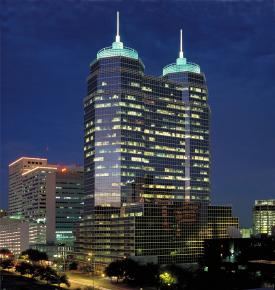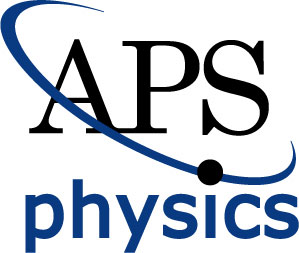DAMOP registration is closed.
The conference program can be accessed
here
Following the Conference Banquet on
Thursday night, Brian Clark will present a talk on Physics and the
Search for Hydrocarbons.
Dr. Clark is a Schlumberger
Fellow based at the Schlumberger Sugar Land Product Center near
Houston. He received his PhD in AMO physics from Harvard University
where he worked with Frank Pipkin. He then spent several years at
Brandeis University before joining Schlumberger. He was named 2002
Texas Inventor of the Year . His role in developing measurement while
drilling technology was recognized by the 1996 Formation Evaluation
Award from the Society of Petroleum Engineers. He has served on the
Governing Board of the AIP and is a member of the Corporate
Associates Advisory Committee of the APS.
Public Lecture, 8 pm Wednesday, May 26 in the Imperial Ballroom, Hyatt Regency Houston Hotel - PUBLIC IS INVITED!
Analyzing the texture of matter from the atom to vacuum
by
Gérard A. Mourou,
Director of the Institut de Lumière Extrême
ENSTA, Palaiseau, France
Abstract
On the eve of the laser's fiftieth anniversary, we cannot but marvel at
the astounding progress accomplished since the first laser shot rang in
the Hughes Research Laboratory in May 1960.
The range of the laser applications is stupefying.
At one extreme, it can be used to slow down the atoms to almost a complete
stop in order to investigate its structure with meticulousness or make,
ultra accurate clocks. At the other extreme, laser light can provide enormous
electric fields capable of accelerating electrons from rest to close to the
speed of light over only a fraction of a micrometer in a femtosecond,
leading to extremely compact laser accelerator for material science,
medical and environment applications.
In the near future, the laser will produce pulses with peak power in
the exawatt regime or hundred thousand times the world grid power during
few femtoseconds. This laser called ELI for Extreme Light Infrastructure,
is being designed and constructed in Europe. It will produce bursts of
high energy particles and radiations in the attosecond and zeptosecond
range and will be the gateway of a new laser-matter interaction regime:
the ultra relativistic regime where not only electrons but ions are thrust
to relativistic velocity.
Finally, its intensity will be so large that il will be able to break down
the vacuum into its fundamental elements and hence offering a new paradigm
to analyze the texture of vacuum.
Biography

Gérard Mourou is Professor at the Ecole Polytechnique and Director of the
Institut de la Lumière Extrême at ENSTA.
He is also the A. D. Moore Distinguished University Emeritus Professor of the University
of Michigan, Professor Mourou has made numerous important contributions in the field of
ultrafast lasers, high-speed electronics as well as in medicine where he introduced
the field femtosecond ophthalmology.
However his most important one is certainly the invention of the laser amplification
technique universally used today and known as Chirped Pulse Amplification (CPA)
at the university of Rochester.
CPA revolutionized the field of optics because it made possible the generation of
extremely high laser intensities that opened a new branch of optics:
relativistic optics, where laser-matter interaction is dominated by the relativistic
character of the electrons. In this regime it is possible to make compact particle accelerators,
or sources of coherent high energy radiation beams. Note also other applications such as
in thermonuclear fusion where the short and intense pulse is used as a fast igniter.
The field of relativistic optics is one of the most active fields of physics today.
Gérard Mourou, proposed to the ESFRI (the European Strategy Forum on Research Infrastructures)
with twelve European partners a new infrastructure called ELI (Extreme Light Infrastructure).
ELI, will host the most intense laser in the world. ELI, is now on the road map of the
large European Infrastructure facilities. Let's note that Gérard Mourou has also
many other interests. In particular, he pioneered the field of femtosecond
ophthalmology at the university of Michigan. In this application, the femtosecond
laser is used to perform precise cut for myopia correction or corneal transplant.
Today more than one million patients have received the femtosecond procedure.







 ,
,
 ,
,
 .
.